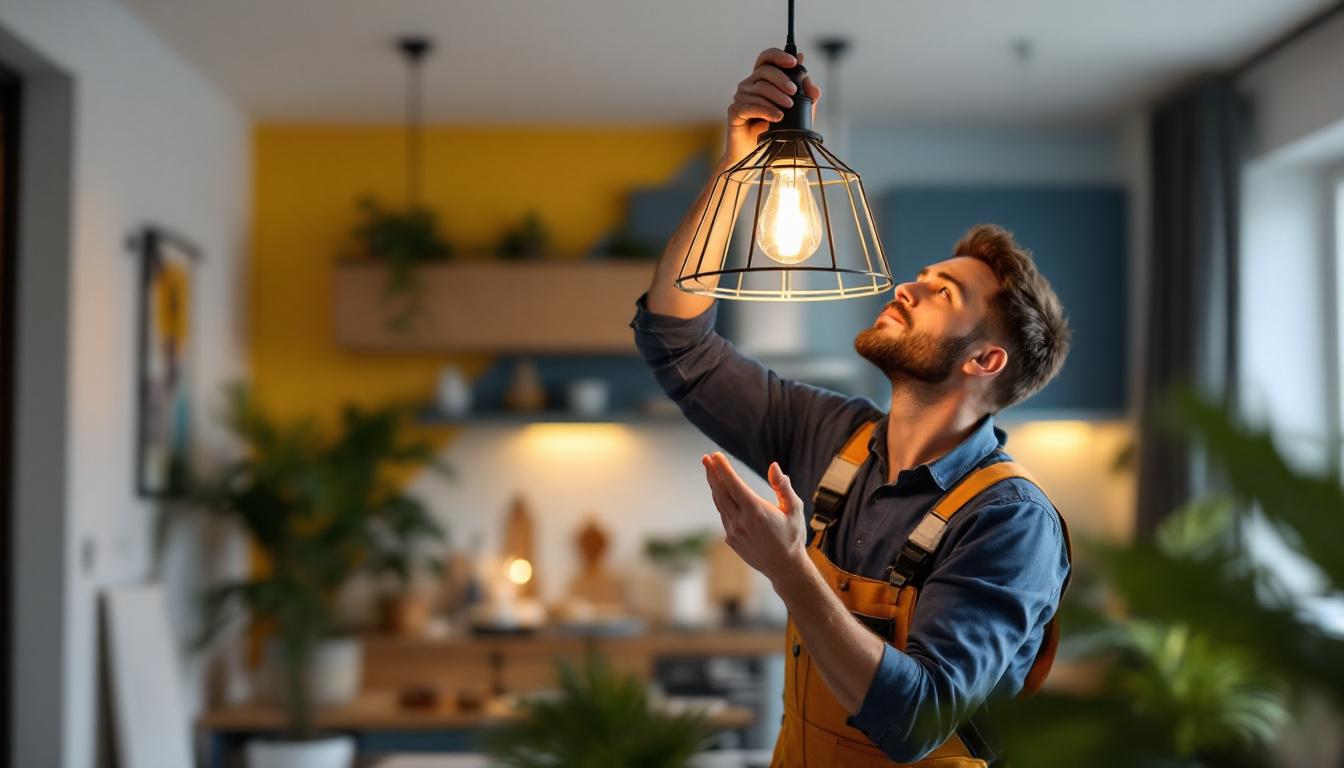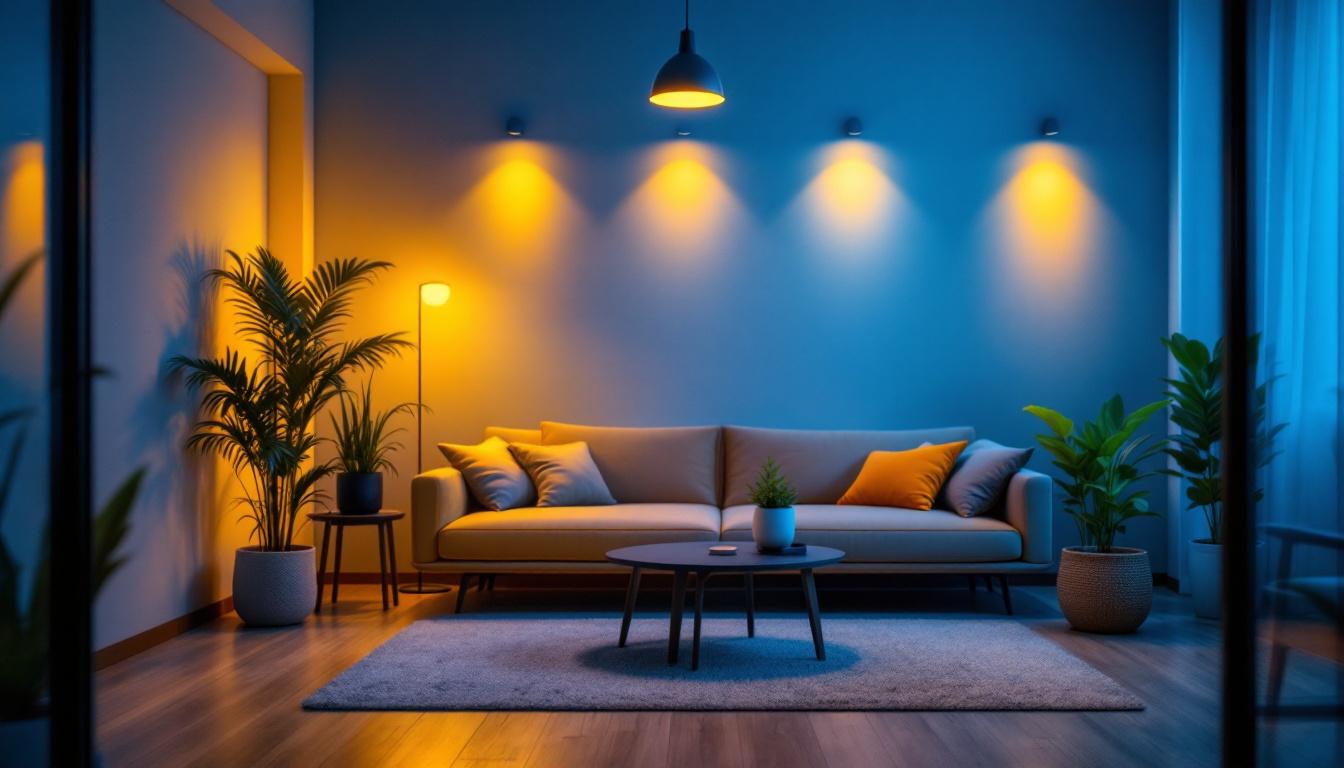LED tape lights have emerged as a versatile and efficient lighting solution for various applications, particularly in residential and commercial settings. These flexible strips of LED lights can be easily installed in a multitude of locations, offering both aesthetic appeal and functional illumination. One of the most popular uses for LED tape lights is under cabinet lighting, a trend that has gained traction among homeowners and lighting contractors alike.
Under cabinet lighting serves multiple purposes: it enhances visibility in work areas, adds a decorative touch to kitchens and other spaces, and can even create an ambiance that elevates the overall design of a room. This article explores the benefits of using LED tape lights under cabinets, the installation process, and tips for maximizing their effectiveness in lighting projects.
In addition to their practical applications, LED tape lights are available in a variety of colors and brightness levels, allowing users to customize their lighting to suit their specific needs and preferences. For instance, warm white tones can create a cozy atmosphere in a dining area, while cooler hues may be more suitable for a modern, sleek kitchen design. Furthermore, many LED tape lights come with dimmable features and smart technology compatibility, enabling users to adjust their lighting remotely or set schedules for when the lights should turn on and off, thus enhancing energy efficiency.
The installation of LED tape lights is generally straightforward, requiring minimal tools and expertise. Most strips come with an adhesive backing that allows for easy mounting on surfaces, while some may require clips or brackets for added security. It’s essential to consider the power source and ensure that the electrical setup can accommodate the tape lights, especially if multiple strips are being installed. Additionally, planning the layout beforehand can help in achieving an even distribution of light, ensuring that every corner of the workspace is adequately illuminated.
Incorporating LED tape lights under cabinets offers numerous advantages that can significantly enhance lighting installation projects. Understanding these benefits can help contractors make informed decisions when recommending lighting solutions to clients.
One of the standout features of LED technology is its energy efficiency. LED tape lights consume significantly less power compared to traditional incandescent or fluorescent lighting options. This not only reduces energy bills for homeowners but also contributes to a more sustainable environment. By opting for LED tape lights, contractors can provide clients with a cost-effective lighting solution that aligns with modern energy-saving practices. Furthermore, the longevity of LED lights—often lasting up to 25,000 hours—means fewer replacements and less waste, further enhancing their eco-friendly appeal. This durability ensures that clients enjoy long-term savings while benefiting from reliable performance.
LED tape lights are incredibly versatile, making them suitable for various applications beyond just under cabinet installations. Their flexible design allows them to be cut to size and installed in tight spaces or around corners, accommodating different cabinet styles and layouts. This adaptability enables contractors to customize lighting solutions that meet the specific needs of each project, enhancing client satisfaction. Additionally, LED tape lights can be used in a variety of settings, such as in closets, along staircases, or even in outdoor spaces, providing a cohesive lighting approach throughout the home. This multi-functionality not only streamlines the design process but also allows homeowners to explore creative lighting designs that enhance the overall ambiance of their living spaces.
Under cabinet lighting can dramatically transform the look and feel of a space. LED tape lights provide a soft, even glow that highlights countertops, backsplashes, and other features without overwhelming the eye. This subtle illumination creates a warm and inviting atmosphere, making kitchens and workspaces more enjoyable to use. By incorporating LED tape lights into their projects, contractors can elevate the aesthetic appeal of their clients’ homes. Moreover, the ability to choose from a range of color temperatures—from warm white to cool daylight—allows homeowners to tailor the lighting to their personal style and the specific mood they wish to create. This customization not only enhances the functionality of the space but also reflects the personality of the homeowner, making the environment feel more personalized and welcoming.
Installing LED tape lights under cabinets is a straightforward process that can be completed with minimal tools and expertise. However, understanding the essential steps can ensure a successful installation that meets safety standards and client expectations.
Before beginning the installation, it is crucial to plan the layout of the LED tape lights. This involves measuring the length of the cabinets and determining the optimal placement for the lights. Contractors should consider the type of adhesive backing on the tape lights, as well as the power supply requirements. Additionally, ensuring that the installation area is clean and free from dust will promote better adhesion and overall performance. It’s also beneficial to visualize the lighting effects by temporarily placing the tape lights in position before finalizing the installation. This allows for adjustments based on the desired brightness and shadow effects, ensuring that the final outcome enhances the aesthetic appeal of the kitchen or workspace.
Once the planning phase is complete, the next step is to cut the LED tape lights to the desired length. Most LED tape lights come with designated cut points, making it easy to achieve a precise fit. After cutting, the adhesive backing can be removed, and the tape lights can be firmly pressed onto the underside of the cabinets. For added security, some contractors opt to use mounting clips or brackets to hold the lights in place. It is also important to consider the orientation of the tape lights; positioning them at an angle can help to diffuse the light more evenly across the countertop, reducing harsh shadows and creating a more inviting atmosphere. Additionally, selecting the right color temperature for the LED lights can significantly impact the overall ambiance, with warmer tones creating a cozy feel and cooler tones providing a more modern, crisp look.
Connecting the LED tape lights to a power source is a critical step in the installation process. Depending on the specific product, this may involve using a power adapter or a hardwired connection. It is essential to follow the manufacturer’s instructions carefully to ensure safety and functionality. Properly securing all wiring and ensuring that it is hidden from view will contribute to a clean and professional finish. Furthermore, considering the use of dimmers or smart home integration can enhance the functionality of the lighting system. Dimmers allow for adjustable brightness levels, catering to different moods and tasks, while smart home systems enable remote control and scheduling, adding convenience and energy efficiency. Ensuring that all electrical connections are insulated and compliant with local codes is paramount to prevent any hazards and to guarantee a long-lasting installation.
To fully leverage the benefits of LED tape lights under cabinets, contractors should consider several strategies that can enhance their effectiveness and appeal.
The color temperature of LED tape lights can significantly impact the ambiance of a space. Warmer tones (around 2700K to 3000K) create a cozy atmosphere, ideal for kitchens and living areas. Cooler tones (4000K to 5000K) offer a more modern and energetic feel, suitable for workspaces. Contractors should discuss color temperature options with clients to ensure the selected lights align with their preferences and the intended use of the space.
Integrating dimming capabilities into LED tape light installations can provide clients with greater control over their lighting environment. Dimmers allow users to adjust brightness levels based on the time of day or specific activities, enhancing the versatility of the lighting solution. Contractors should consider recommending compatible dimmer switches or smart home integration options to elevate the overall functionality of the installation.
For added convenience and energy savings, contractors can incorporate motion sensors into LED tape light installations. These sensors automatically turn the lights on when someone enters the room and off when the area is unoccupied, reducing unnecessary energy consumption. This feature is particularly beneficial in kitchens and utility areas, where hands may be full or occupied, making it difficult to reach for a switch.
While installing LED tape lights under cabinets can be a straightforward process, there are common pitfalls that contractors should be aware of to ensure a successful project.
One of the most frequent mistakes is failing to adequately prepare the surface for installation. Dust, grease, or moisture can hinder the adhesive’s effectiveness, leading to premature failure of the tape lights. Ensuring that the installation area is clean and dry will promote better adhesion and longevity of the lights.
Another critical consideration is the electrical load. Contractors must ensure that the total wattage of the LED tape lights does not exceed the circuit’s capacity. Overloading can lead to tripped breakers or even fire hazards. It is essential to calculate the total wattage of the installed lights and verify that the circuit can handle the load safely.
Before completing the installation, it is vital to test the LED tape lights to ensure they are functioning correctly. This includes checking for any flickering, uneven lighting, or color discrepancies. Addressing any issues before finalizing the installation will save time and prevent potential callbacks from clients.
LED tape lights under cabinets offer a myriad of benefits that can enhance both the functionality and aesthetics of residential and commercial spaces. Their energy efficiency, versatility, and ability to create inviting atmospheres make them a popular choice among homeowners and contractors alike. By understanding the installation process, maximizing effectiveness, and avoiding common mistakes, lighting contractors can deliver exceptional results that meet client expectations.
As the demand for innovative lighting solutions continues to grow, embracing technologies like LED tape lights will position contractors as leaders in the industry. By staying informed about the latest trends and best practices, contractors can ensure they provide the highest quality service and products to their clients, ultimately leading to successful lighting installation projects.
Ready to elevate your lighting installations with the efficiency, versatility, and aesthetic appeal of LED tape lights? Look no further than LumenWholesale for all your lighting needs. We provide contractors with superior, spec-grade lighting products at the most competitive wholesale prices. With our commitment to quality and affordability, you can access a wide range of high-performance lighting options that meet the highest industry standards. Plus, enjoy the convenience of free shipping on bulk orders, ensuring you get the best value without any hidden costs. Make your next project shine and experience Wholesale Lighting at the Best Value with LumenWholesale.

Discover essential tips and strategies for lighting contractors to seamlessly integrate pathway solar lights into projects.

Discover the comprehensive guide to 6-inch LED lights tailored for lighting contractors.

Discover how pendant light hanging techniques can help lighting contractors win more bids.

Explore the rising significance of Flouracent in the lighting industry, uncovering its innovative applications, energy efficiency benefits, and the role it plays in shaping sustainable lighting solutions for the future..